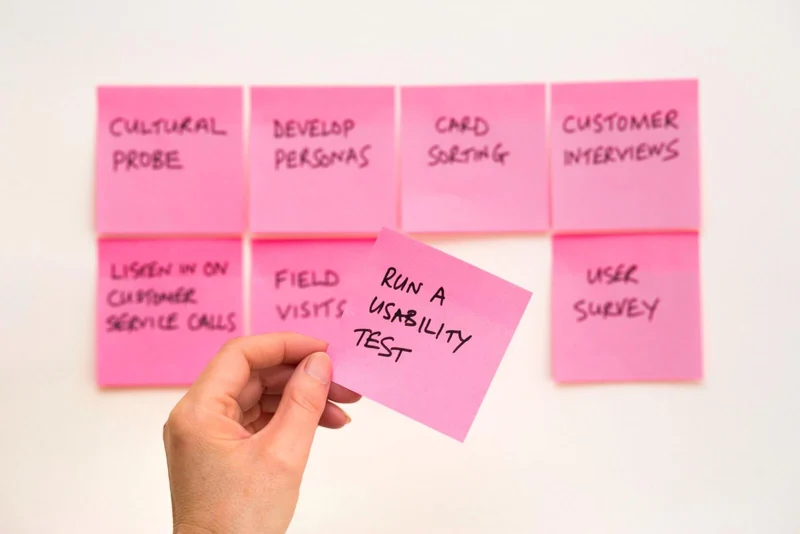The System Development Life Cycle, Explained (+MCQs)
TABLE OF CONTENTS
Which phase of the System Life Cycle involves gathering all the necessary information for understanding the requirements of the system?
During which phase of the System Development Life Cycle do you create a detailed specification of the system?
What is the last stage of the System Life Cycle?
Which of the following is the broader, more comprehensive, and more complex term to use when defining software development processes?
Which phase of the System Life Cycle involves deploying the system and making sure it runs as expected?
Is the client involved in the Development stage of the Systems Development Life Cycle?
What does SDLC stand for?
Once you deliver the project, there's nothing else you need to do.
Business Analysts are never involved in the SDLC process.
At which stage of the SDLC do you assess if you need a new system or not?
FAQs:
The System Life Cycle (System Development Life Cycle or SDLC for short) is a process used by software developers and other IT professionals to create, maintain, and improve computer systems. SLDC is a project management method: a series of steps to ensure that software development is methodically taken from idea to successful operation.
The Structure of the System Development Life Cycle
You can compare the System Life Cycle to an assembly line. Each step is undertaken to build the desired system, while also ensuring its quality and reliability. The structure of the SDLC can differ from one project/ organization to another. However, it usually follows a similar pattern, comprised of seven steps:
- Planning
- Analysis
- Design
- Development
- Integration and Testing
- Implementation
- Operations and Maintenance
In some exceptions, the stages of SDLC also include an eighth phase and a ninth phase:
- Evaluation (where the team collects feedback and evaluates the system against the initial objectives.)
- Disposal (where you discontinue the information system to make the transition to a new system.)
However, for this article, we will only discuss the generally-accepted seven stages. At the end of our introduction to the stages of the SDLC, you will also find 10 multiple-choice questions you can use to test what you've just learned.

It is worth noting that the System Life Cycle does not replace or compete with Agile methodologies. Rather, most people use the concept of an umbrella term to denote the workflow process used in a range of methodologies/models such as Waterfall, Agile, Spiral, Rapid Prototyping, Incremental, and so on. In other words, models that fall under the "SDLC" umbrella range from agile to iterative to sequential. The difference between different models doesn't lie in whether or not they include the seven stages of SDLC, but in how you approach them.
Before we dive into the more in-depth explanations of each SDLC phase, keep in mind that "system development" and "software development" aren't the same. The two terms share multiple similarities, but the main difference lies in the fact that system development takes a more holistic, complex view of an application.
Planning (Preliminary Analysis)
The Planning phase of the System Life Cycle includes identifying the project's needs, as well as its objectives and goals. At this stage, you will have to run a detailed analysis of these goals, to determine whether or not they are achievable. Furthermore, you will also have to assess whether or not you need a new system to achieve your business goals.
You will have to start by gathering all the necessary information and have an in-depth understanding of the current system. Include all system-related documentation and user feedback in your research — and remember to also run a cost-benefit analysis (to ensure that the project is financially sound).
Analysis and Requirements Definition
The Analysis stage of the SDLC is where you will take the Planning (or Preliminary Analysis, as it's sometimes called) to the next level. In this phase, you will break down the high-level objectives of the project into actual functions of the system and you will identify potential solutions. You will also write down high-level documentation to further analyze the system's requirements and identify any gaps between the current and desired product.
Design
The System Design stage is where you'll work out all the details of the project. This involves creating a detailed specification of the system, including user interface design, data structures and storage formats, as well as protocols for communication. Furthermore, it involves creating screen layouts, process diagrams, business rules, and sometimes even pseudocode. You'll also include multiple stakeholders in this stage, such as the client, the designer, the business analyst, and so on.
Development
This is the most straightforward SDLC stage (and what most people see). In this phase, you will develop the code that makes up the system. This involves using programming languages and tools, as well as sticking to a specific methodology (like Scrum, Kanban, Waterfall, Agile, or sometimes a combination thereof). Most times, the project manager and the actual development team are most hands-on in this stage of the System Life Cycle — but depending on your chosen methodology, you might have to set up regular client meetings and leadership updates to ensure everyone's in the loop on the progress.
Integration and Testing
The Integration and Testing phase of the SDLC is where you integrate all the pieces of the system. The entire stage involves connecting databases, servers, and code snippets to ensure that the project is running properly. It also involves testing the system to make sure that it operates as expected.
Implementation
The Implementation phase of the System Life Cycle is all about making a detailed specification and being certain that it runs as expected. At this stage, you'll publish your project and start getting the first users for your information system. Keep in mind that you might also have to consider launch events and beta tests before the product is out in the open.
Operations and Maintenance
Operations and Maintenance is the last stage of SDLC. This is the phase where you make sure that the system continues running properly and that it caters to all its users' needs. As such, it also involves troubleshooting issues, ensuring the system doesn't become obsolete, and making changes as needed. This phase is ongoing and you should never neglect it, as it is a significant part of the System Development Life Cycle.

The System Development Life Cycle: Multiple-Choice Questions
Want to test your knowledge of the SDLC? Here are some MCQs to help you out:
Which phase of the System Life Cycle involves gathering all the necessary information for understanding the requirements of the system?
A. Planning
B. Analysis and Requirements
C. Design
D. Development
During which phase of the System Development Life Cycle do you create a detailed specification of the system?
A. Design
B. Analysis and Requirements
C. Development
D. Implementation
What is the last stage of the System Life Cycle?
A. Maintenance
B. Implementation
C. Design
D. Development
Which of the following is the broader, more comprehensive, and more complex term to use when defining software development processes?
A. Agile
B. Scrum
C. System Development Life Cycle
D. Software Development Life Cycle
Which phase of the System Life Cycle involves deploying the system and making sure it runs as expected?
A. Design
B. Integration and Testing
C. Implementation
D. Maintenance
Is the client involved in the Development stage of the Systems Development Life Cycle?
A. Absolutely no
B. Yes, depending on the specific SDLC model
C. Only at the beginning
D. Only when you have questions
What does SDLC stand for?
A. System Dynamics Life Cycle
B. Software Dynamics Life Cycle
C. System Design Life Cycle
D. System Development Life Cycle
Once you deliver the project, there's nothing else you need to do.
A. True
B. False
C. Depends on the project specifications
D. Depends on the client's requirements and budget
Business Analysts are never involved in the SDLC process.
A. True
B. False
C. Depends on the project objectives
D. Depends on the client’s budget
At which stage of the SDLC do you assess if you need a new system or not?
A. Design
B. Analysis and Requirements
C. Implementation
D. None of the options
Answer Key: 1A, 2B, 3A, 4C, 5C, 6B, 7D, 8B, 9B, 10D.
FAQs:
Q1. What is the Product Life Cycle MCQ?
Product Life Cycle MCQ is a multiple-choice question format that you can use to assess your understanding of the product life cycle. As for the product life cycle, it is the cycle through which a product goes from its initial concept to its eventual expiration. It’s worth mentioning that product life cycle and system development life cycle are not interchangeable terms. The former term is for the process of bringing a product from concept to market, while the latter refers to the entire process of creating an information system.
Q2. What is an SDLC MCQ example?
An SDLC MCQ example could be the following: “Which phase of the System Life Cycle involves gathering ensuring the system does not go obsolete?"
A. Planning
B. Design
C. Development
D. Maintenance
Answer: D. Maintenance
Q3. What is a test case in SDLC?
A test case in SDLC is a set of conditions, variables, and steps you use to verify the functionality of an application or system. Usually, you will write this in document format and use it during the testing phase of the SDLC process. Its main goal is to help identify any potential errors or issues with the system to guarantee a successful implementation.
